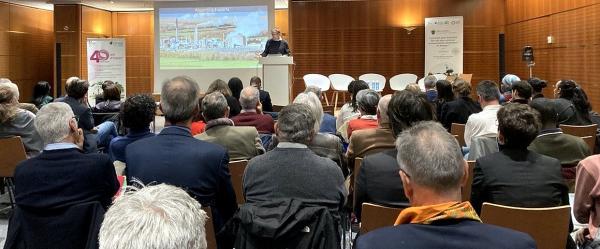Event 7 March 2024
- Home
- CIRAD news
- News
- Agriculture and climate: a mixed bag of results from COP27
Agriculture and climate: a mixed bag of results from COP27

© Clément Bourgoin
The agreement adopted at COP27 officializing the creation of a loss and damage fund has been met with widespread applause. But were there no other notable advances? "We cannot expect a COP to produce instant results. Progress is more gradual", says Vincent Blanfort, a pastoral agroecologist at CIRAD. He sees the fact that agriculture is still on the agenda in international talks and recognized as a potential solution to the effects of climate change as a source of satisfaction.
Koronovia, back for another four years
The completion of the Koronovia joint work (2017-2022) resulted in the adoption of a text recognizing the importance of adaptation and mitigation issues. Talks are due to continue as part of the Sharm el-Sheikh four-year plan on agriculture and food security.
While there are no specifics as to the direction to be taken or the framework for subsequent talks, "the text sends a strong political message and a call to donors", CIRAD's Marie Hrabanski, a political science researcher, considers. "The agricultural sector, along with food systems, is responsible for 37% of global greenhouse gas emissions (including deforestation), but it currently receives just 2% of climate funding." A platform was also set up at COP27 to receive State contributions and launch new debates, notably around the links between migration, climate change, agriculture and epizootics.
Carbon markets are expanding
Another advance that has yet to be put into practice is the extension of carbon markets – which were initially intended to develop carbon sinks via forests – to soils. "Agricultural carbon sequestration projects could benefit from the sale of carbon credits, provided appropriate measuring systems are established. This could transform farming practices", Marie Hrabanski says.
CIRAD's work in this field is focused on working with its partners to define more nuanced measuring tools that take account of the contribution agropastoral practices make to carbon capture in soils, particularly in places where references are in short supply and grass-fed livestock systems are predominant. In the Sahel, for instance, the CaSSECS project is supplying the (agro)pastoral ruminant production sector with skills, tools and references to quantify its impact on climate change more effectively and support the drafting of appropriate territorial policy. In the Brazilian Amazon, the TerrAmaz and Sustenta & Inova projects are combining efficient grassland and animal management in suitable areas with forest renovation in abandoned zones. “These pathways to more profitable livestock production are contributing to achieving climate and ecological goals, alongside the steps being taken by the Brazilian ministry in charge of the fight against illegal deforestation, and are eligible for green funding", Vincent Blanfort points out.
The 4 per 1000 initiative, for its part, is analysing and promoting practices that foster carbon storage in soils (replacing mineral fertilizers with organic fertilizers, reforesting mining sites, agroforestry systems, etc). "On average, industrial livestock production generates 2 kg of methane per litre of milk, compared to 10 kg in pastoral systems", Vincent Blanfort explains. "However, in pastoral systems, that methane is offset by more virtuous practices in terms of carbon storage and resource preservation." CIRAD is calling for methodologies such as the Global Livestock Environmental Assessment Model (GLEAM) – on which it is working with FAO – to be used in place of current measuring tools designed for industrial systems, which tend to overestimate the impacts of other agricultural models.
Food insecurity and agroecology: a missed opportunity
These models are controversial and interest in them varies considerably from one country to another. Some are banking on agroecology and questioning our current meat-based diets, while others are in favour of technical solutions to guarantee more "sustainable" intensive farming.
This is what prompted the United States and the United Arab Emirates to present the AIM4C initiative. It aims to put additives into livestock feed, to cut methane emissions from the livestock sector without changing herd size. "This is emblematic of the drive to promote technology-based solutions rather than taking a more holistic approach", Marie Hrabanski regrets.
There were also some glaring absences from the talks, notably the issues surrounding increased food insecurity as a result of climate change. "Carbon finance mechanisms are currently too complex and unsuitable for family farmers and those very people affected by food insecurity", Sandrine Dury, a food systems specialist at CIRAD, concludes.


























